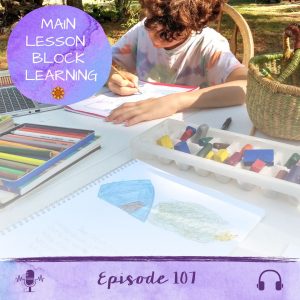Discussion Two is all about the temperaments! On Day One of the Teacher’s Seminar in 1919, Steiner introduced the temperaments by saying, “The important thing for us to remember is the diversity of children and indeed of all human beings.” And here is more of Steiner on the temperaments.
Steiner went on to say that, “such diversity can be traced to four fundamental types, and the most important task of the educator and teacher is to know and recognize these four types we call the temperaments.” The four temperaments are: choleric, sanguine, phlegmatic and melancholic.
In Discussion Two then, the teachers ask Steiner many questions on the temperaments, such as:
- How is the sanguine temperament expressed and how should it be treated?
- What would you do if a phlegmatic child simply did not come out of herself or himself at all and nearly drove you to despair?
- Wouldn’t it be possible to have the phlegmatic children come to school an hour earlier?
Remember on Day One, Steiner said “The temperament gradually wears down its own corners; as the tenth year approaches the difference in temperaments will gradually be overcome.”
Jean: Steiner is giving descriptions of how to use the temperaments in a group setting with the implication that this is necessary because of the classroom setting. He says that “much depends on whether or not you can give individual treatment” because that is ideal. In homeschooling, we have the opportunity for more individualized attention! We observe our children, notice their temperaments or tendencies, and then work to meet them, not try to change them (ideally!). Steiner says we “must use a very light touch and humor.” I also love that Steiner gives musical recommendations for each temperament in this lecture!
Steiner is also careful to point out that no one person is completely one temperament, but that we have tendencies toward one or two temperaments. The goal is a mixed balance of them all!
BTW: If you want a visual of the four temperaments, I started a board on Pinterest that you can check out here.
Alison: What I have latched on to is Steiner saying that while all of us have our own particular mix of temperaments – EACH phase of life is associated with one temperament. I TOTALLY see that. Childhood is sanguine, adolescence is choleric, middle age is melancholic, and old age is phlegmatic. This seems to me a really useful way to use the ideas of the temperaments in our home teaching. With teaching style, it seems great to really work with the sanguine temperament in childhood and then on to the choleric strategies (with PATIENCE) with the teens.
Steiner wants us to then continue to carry with us the previous stage of life’s temperament so that by the end of life, we have all of them in us. BALANCE!
Alison: I also liked how Steiner described the poet as sort of carrying parts of all of these temperaments in his soul throughout his or her life, hence the highly empathetic nature of true poets!
Jean: I know it’s important not to get too fixed on a child’s temperament; Steiner says: “you must remember above all that the human being is constantly becoming, always changing and developing.”
I’m reading more on this topic in the book The Temperaments and the Arts by Magda Lissau. Do you have a favorite resource on the temperaments? Please do share!
The highlight of Discussion Two for me (Jean) is the quote below.
Steiner: “Please remember particularly that when we are dealing with the temperament of a child, as teachers we should not assume that a certain temperament is a fault to be overcome. We must recognize the temperament and ask ourselves the following question: How should we treat it so that the child may reach the desired goal in life – so that the very best may be drawn out of the temperament and with the help of their own temperaments, children can reach their goals.”
The Steiner Cafe is a place to explore and reflect on the that lectures Rudolf Steiner gave at the Teacher’s Seminar in 1919, the very first Waldorf teacher training. Each month here, we ponder one day of the seminar.
To read reflections on previous lectures, check out The Steiner Cafe page.
These lectures are published in three books; the morning lectures in The Foundations of Human Experience; later morning lectures in Practical Advice to Teachers; afternoon lectures in Discussions with Teachers. We invite you to pick up the books and read along.
If you prefer, you can read online at www.rsarchive.org, or listen at www.rudolfsteineraudio.com. Or, just meet us here each Thursday or Friday at The Steiner Cafe for some lively discussion. Lot’s of options! Hope you’ll join us.










Hi – I’m wondering where the quotes are from Steiner that you have quoted please? I can’t seem to locate them when I search online.
Thank you
Angelique, this post is reflections on Day Two of Steiner’s lectures to the very first Waldorf teachers all about the temperaments. The quotes are from Discussions with Teachers, a collection of Steiner’s afternoon conversations with those teachers. (That’s an affiliate link to the book.)